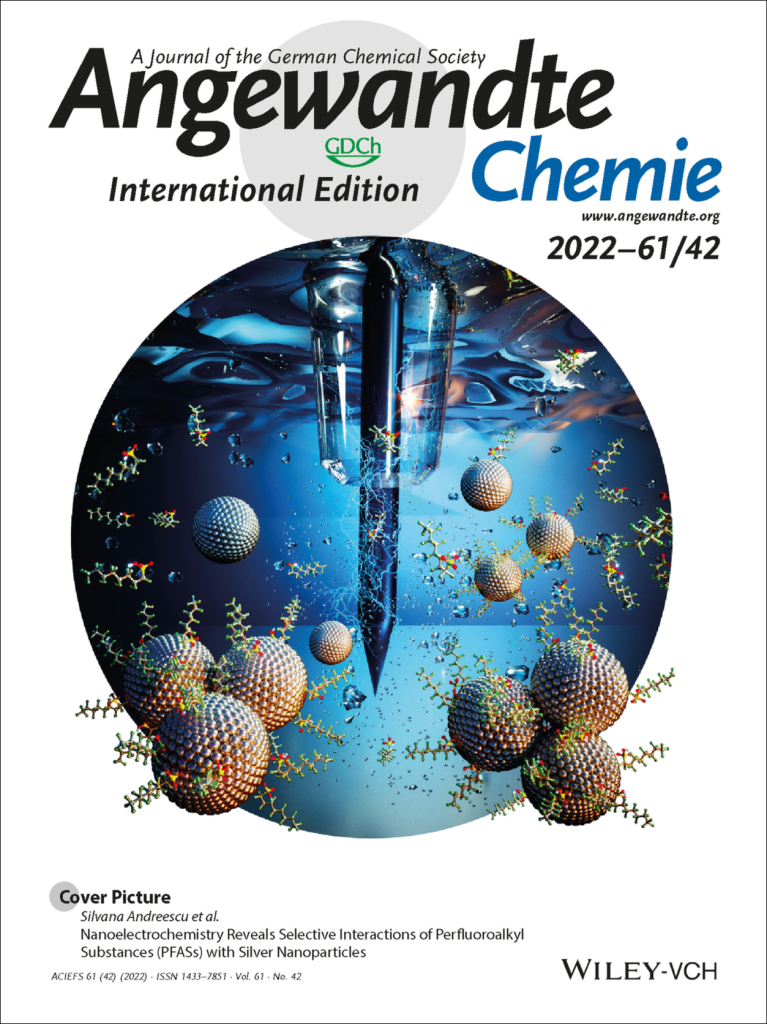Featured on the Cover Page of Prestigious Chemistry Journal
Per- and polyfluoroalkyl substances (PFAS) are a group of synthetic chemicals that have been used in a wide range of industries and consumer products. PFAS are of growing concern because of their ubiquitous presence and harmful effects on the environment and human health. Advisory limits for characterizing PFAS exposure have been set at very low concentrations, but such low levels are difficult to detect due to their unique chemical structure comprising of strong carbon-fluoride bonds. Characterization of PFAS exposure across different environments relies on a single laboratory-based technique that is expensive and not broadly available.

That’s why Clarkson University researchers have used nanoelectrochemistry, a method that relies on single-particle collisions on microelectrodes, to achieve insights into the molecular level interactions of PFAS at single molecule levels. The Clarkson team has used tiny silver nanoparticles as redox labels and nanosensors to measure PFAS as they interact with single particles, providing a means to identify these substances down to ppt levels. This new approach provides the foundational knowledge to advance the use of nanosensors for achieving ultrasensitive detection of PFAS.
The work performed in the laboratory of Professor Silvana Andreescu, the Egon Matijevic Chair in Chemistry, was recently featured on the front cover page of the prestigious chemistry journal, Angewandte Chemie. Two chemistry graduate students, Reem Khan and Mohamed Hassan were involved in the project. Dr. Jinyun Ye contributed computational expertise to model the interactions of PFAS at the single particle level. “Our work demonstrates a completely different approach to characterize PFAS. These findings set the stage for further exploration of the electrochemistry of metal nanoparticles as a means to monitor and detect PFAS with high sensitivity. This could lead to ultrasensitive methods and nanosensors for more rapidly and inexpensively measure PFAS. Such methods are not currently available but highly sought after by the community,” said Professor Andreescu.
More details are available at:
https://onlinelibrary.wiley.com/doi/full/10.1002/anie.202212561

